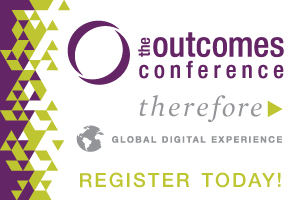
Finding Your People Where They Are By David Bourgeois
In the past, I have explored the idea that we are in a “post-website world.” Because of this, we must learn how to get our message in front of our audience where they are. And the data show that they are on social networks. But this sometimes leads ministry leaders to the wrong conclusion, as I discuss in my book:
Many will look at these data and this shift toward more interactive and social online activity and draw the conclusion that their ministry should build its own social network or other interactive site. This is absolutely the wrong conclusion! If you knew that your potential au- dience went to Starbucks every day and you wanted to engage with them, would you first build your own coffeehouse down the street and then tell them, “Come to my shop; I’ll be waiting”? No. Your best strategy would be to go to Starbucks yourself and interact with them there. There are very few situations in which creating your own environment for interacting with your audience makes sense.
In order to successfully reach your audience, you must go where they are. I call this “getting in the stream.” Every one of us has a digital stream of information that we immerse ourselves in every day. Think about it, when you get in front of your computer or mobile phone, where do you automatically go? Facebook, email, text messages, Twitter…these are just a few of the “streams” that are out there that pass in front of our eyes every day.
To effectively get our audience’s attention, then, we must understand what streams they use and then develop a strategy for putting ourselves into those streams. And we cannot just assume we know which streams they use! Your audience may favor Twitter over Facebook, text messages over email, or videos over all of them. Research is such an important step in understanding our audience.
Good research takes time and talent. You cannot simply throw up a survey, hope some people fill it out, and call it research. There are three simple things any organization can do right now to begin getting some insights into what their target audiences are doing online.
- Create good surveys. Creating a well-thought-out survey is not simple; I would suggest that, if possible, you find a survey used by a reputable research organization and modify it, as opposed to creating one yourself. A copy of the survey that I used at our church is available here (note that it was designed in 2007, so some updates may need to be made!).
- Use focus groups. If you can get a group of individuals from your target group together to discuss how they use digital tools, you will learn quite a bit about how to reach them. A focus group is more than simply having coffee with people; for a focus group, you need to have specific goals in mind before beginning.
- Use third-party research. Using third-party data, such as that from the Pew Internet & American Life Project or the U.S. Census, will also give you some ideas of how to reach your group. In fact, just combining data from those two sources can give you quite a bit of insight about your own community.
Do you think that it is futile to build your own social network? In which cases might it make sense? Share your thoughts with me in the comments.
##
David Bourgeois is an Online ministry researcher and educator. Associate Professor and Director of Innovation for the Crowell School of Business at BIola University. Author of Ministry in the Digital Age. In his class this spring, he will lead students through creating e-commerce websites for small businesses or ministries. If you are interested in finding out more about this, read his blog post about it here.

What is Christian Leadership Alliance?
Christian Leadership Alliance equips and unites leaders to transform the world for Christ. We are the leaders of Christ-centered organizations who are dedicated to faithful stewardship for greater kingdom impact.
Sign up for FREE blog updates.
Upcoming Events
Check back later!


